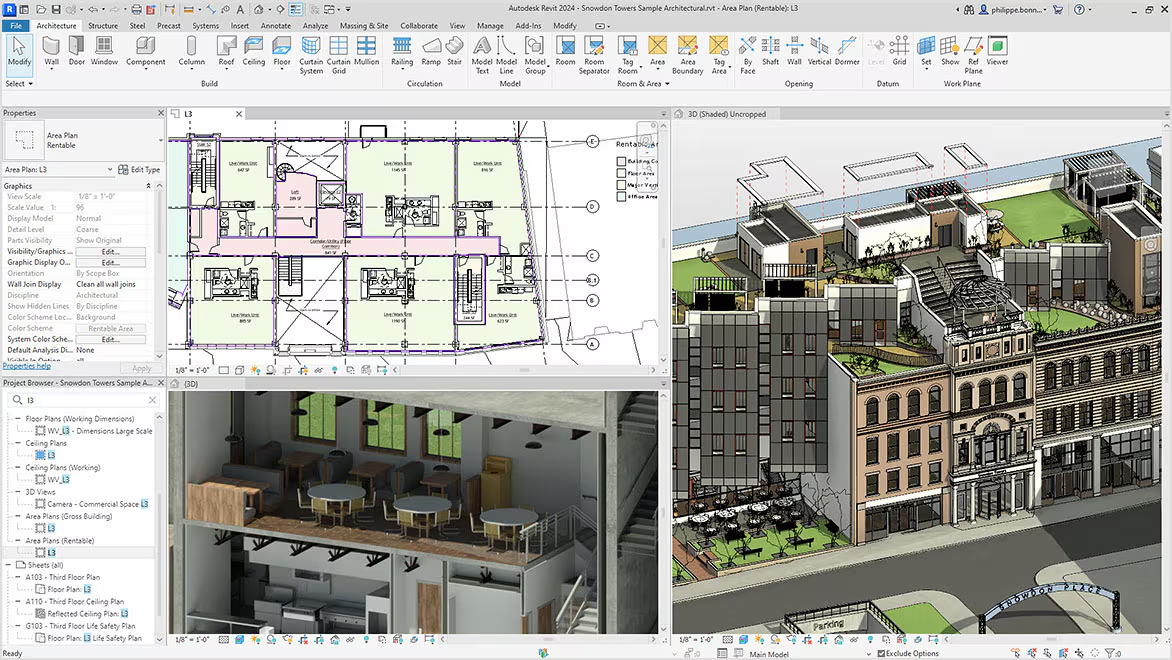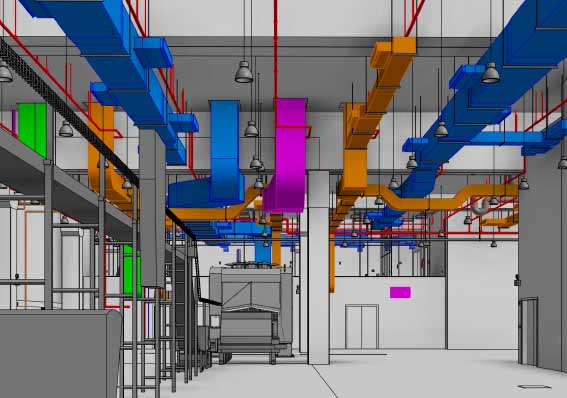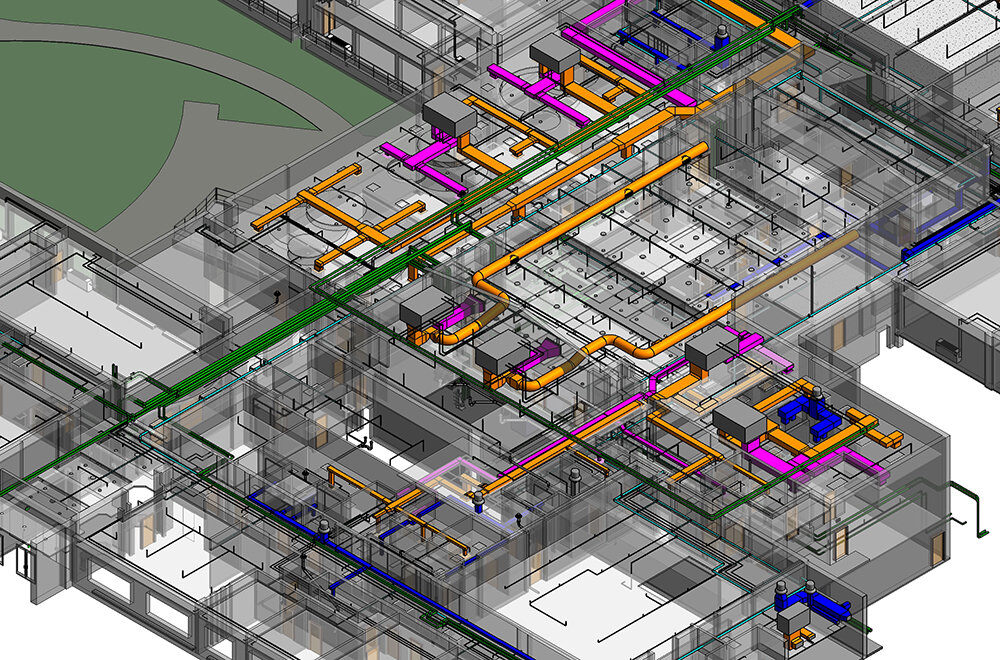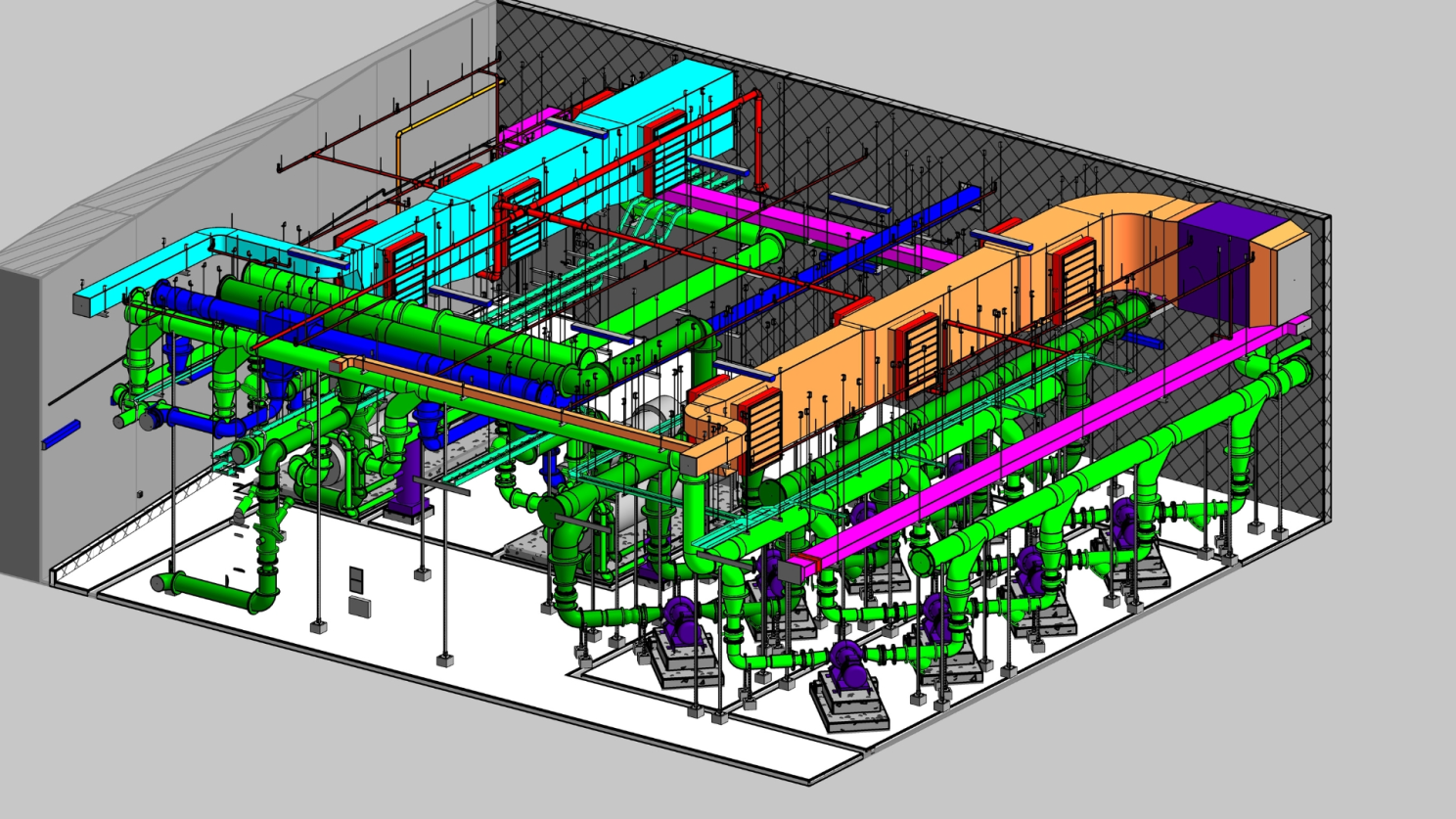
The evolution of MEP engineering has seen a significant transformation with the adoption of Revit MEP. In an industry where precision, efficiency, and collaboration are paramount, this powerful BIM MEP software has revolutionised how MEP engineers approach MEP design. With its ability to streamline workflows, enhance accuracy, and improve coordination, Revit MEP software has become an indispensable tool for professionals engaged in MEP work in construction.
As the construction sector increasingly embraces MEP BIM services, mastering Revit MEP is no longer an option but a necessity for career growth. This article explores Revit MEP advantages, career opportunities, and the best ways to gain expertise, including the benefits of enrolling in a Revit MEP course.
What is Revit MEP?
What is Revit MEP? Simply put, it is a specialised BIM MEP software developed by Autodesk to facilitate MEP design and documentation. It enables MEP engineers to create intelligent, 3D parametric models of MEP systems, allowing seamless collaboration between various disciplines involved in construction projects.
Unlike traditional CAD software, Revit MEP software provides a holistic approach to designing MEP systems, ensuring greater accuracy and coordination. Engineers benefit from a data-rich environment that enhances project efficiency, whether working on Revit MEP mechanical, Revit MEP plumbing, or electrical designs.
Key Benefits of Revit MEP for MEP Professionals
For Mechanical Engineers
-
Revit MEP mechanical allows for precise duct and HVAC system design, reducing errors.
-
Automatic clash detection prevents costly on-site modifications.
-
Advanced simulation tools improve airflow analysis and energy efficiency.
-
Streamlined workflow enhances collaboration with architects and structural engineers.
For Electrical Engineers
-
Revit MEP software simplifies electrical system modelling with accurate load calculations.
-
Seamless integration with other disciplines ensures coordinated designs.
-
Automatic cable tray routing and circuit analysis optimise efficiency.
-
Parametric components make modifications quick and efficient.
For Plumbing Engineers
-
Revit MEP plumbing automates pipe routing, reducing design errors.
-
Water supply and drainage system simulations improve accuracy.
-
Smart object tracking enhances project documentation.
-
Integration with BIM reduces clashes and rework, saving costs.
Challenges in Adopting Revit MEP & How to Overcome Them

Despite its numerous advantages, adopting Revit MEP software comes with challenges:
-
Steep Learning Curve: New users may find it complex. Enrolling in a structured Revit MEP course simplifies the learning process.
-
Software Costs: Licensing fees can be high, but many firms find the investment worthwhile due to improved project efficiency.
-
Implementation Time: Transitioning from traditional CAD to Revit MEP requires time, but the long-term benefits far outweigh the initial adaptation phase.
By undertaking professional training, engineers can overcome these hurdles and unlock the full potential of Revit MEP advantages.
Career Opportunities & Growth for MEP Engineers with Revit MEP Expertise
With the growing demand for MEP BIM modeling, professionals skilled in Revit MEP enjoy better career prospects and salaries. The following table outlines average salary ranges for MEP engineers proficient in Revit MEP software:
|
Experience Level |
Role |
Average Annual Salary (INR) |
|
Entry-Level |
MEP Engineer |
₹2.4 Lakh - ₹10.5 Lakh |
|
Mid-Level |
Revit MEP Modeler |
₹2.1 Lakh - ₹10.2 Lakh |
|
Senior-Level |
Senior MEP Engineer |
₹4.2 Lakh - ₹12 Lakh |
With expertise in MEP BIM services, professionals can secure lucrative roles in large firms and multinational corporations.
How Novatr’s BIM MEP Course Helps MEP Engineers Master Revit MEP
The demand for skilled MEP engineers proficient in Revit MEP software is rapidly growing. As construction projects become more complex, the need for professionals with expertise in MEP BIM services has never been greater. While many engineers struggle to learn Revit MEP on their own, structured training can significantly accelerate their understanding and mastery of the tool. This is where Novatr’s BIM Professional Program for MEP Engineers stands out.
Here’s how Novatr’s program benefits aspiring MEP engineers:
1. Comprehensive Training in Revit MEP
The course covers all major aspects of Revit MEP and MEP BIM modeling, including Revit MEP mechanical, Revit MEP plumbing, and electrical system modelling. Engineers gain practical knowledge on designing and analysing HVAC systems, water supply networks, and electrical layouts. This ensures they can confidently handle real-world MEP system projects with accuracy and efficiency.
2. Industry-Relevant Projects and Practical Learning
Unlike traditional courses that focus on theory, Novatr’s program is structured around hands-on projects. Engineers get to apply their knowledge in live construction scenarios, helping them gain real-world experience in MEP BIM modeling. This hands-on approach enhances problem-solving skills and ensures engineers are well-prepared for industry challenges.
3. Career Support and High-Paying Job Opportunities
Novatr does not just provide training; it also assists learners in securing high-paying jobs. Engineers receive resume-building assistance, job placement support, and access to exclusive career opportunities in MEP BIM services. With expertise in Revit MEP, professionals can unlock lucrative positions in the industry with competitive salaries.
Conclusion
The adoption of Revit MEP is no longer a luxury but a necessity for MEP engineers looking to thrive in the modern construction industry. Its ability to enhance efficiency, coordination, and precision makes it a crucial tool for MEP design. While challenges exist in adopting Revit MEP software, the benefits far outweigh them, making it an essential skill for professionals in MEP engineering.
For engineers seeking career growth, mastering Revit MEP through a structured Revit MEP course can open doors to high-paying roles in MEP BIM modeling and beyond. With the right training, professionals can stay ahead in the evolving landscape of MEP works in construction and secure a promising future in the industry.
Among the best options, the BIM Professional Program for MEP Engineers by Novatr stands out the most. For the latest updates, tools, and insights into the MEP and BIM industry, explore Novatr's Resource Page.
FAQs
Q1: What is Revit MEP, and why is it essential for MEP engineers?
Ans: Revit MEP is a BIM MEP software developed by Autodesk that allows MEP engineers to design, analyse, and document MEP systems in an integrated 3D model. It enhances accuracy, reduces errors, and improves collaboration among project stakeholders, making it an essential tool for modern MEP works in construction.
Q2: What are the key advantages of using Revit MEP software?
Ans: The primary Revit MEP advantages include improved coordination between MEP engineers, clash detection, automatic updates to design modifications, and parametric modelling capabilities. Additionally, it enhances project efficiency, reduces rework, and streamlines the workflow for MEP BIM modeling, resulting in cost and time savings.
Q3: How does Revit MEP help in MEP design?
Ans: Revit MEP software provides an intelligent platform where MEP engineers can create a centralised MEP model that integrates Revit MEP mechanical, Revit MEP plumbing, and electrical systems. This ensures seamless collaboration, accurate load calculations, and a better visual representation of MEP systems, reducing the chances of design conflicts.
Q4: What career opportunities are available for MEP engineers with Revit MEP expertise?
Ans: Professionals skilled in Revit MEP can work as MEP engineers, MEP BIM modelers, or MEP design managers. Career growth is promising, with salaries ranging from ₹2.4 lakh to ₹12 lakh annually, depending on experience and expertise in MEP BIM services. Companies prioritising MEP works in construction often seek trained professionals.
Q5: How does Revit MEP benefit mechanical engineers?
Ans: For Revit MEP mechanical engineers, the software simplifies HVAC system design, optimises airflow analysis, and improves energy efficiency. It also enables automatic duct sizing, clash detection, and better integration with other MEP design components, ensuring more accurate and cost-effective construction processes.
Was this content helpful to you



.jpeg)



